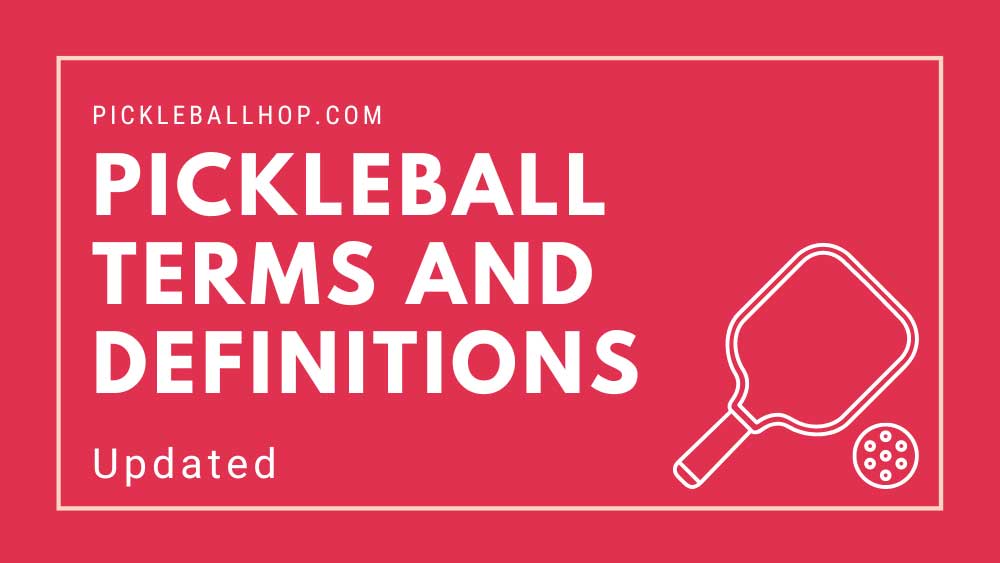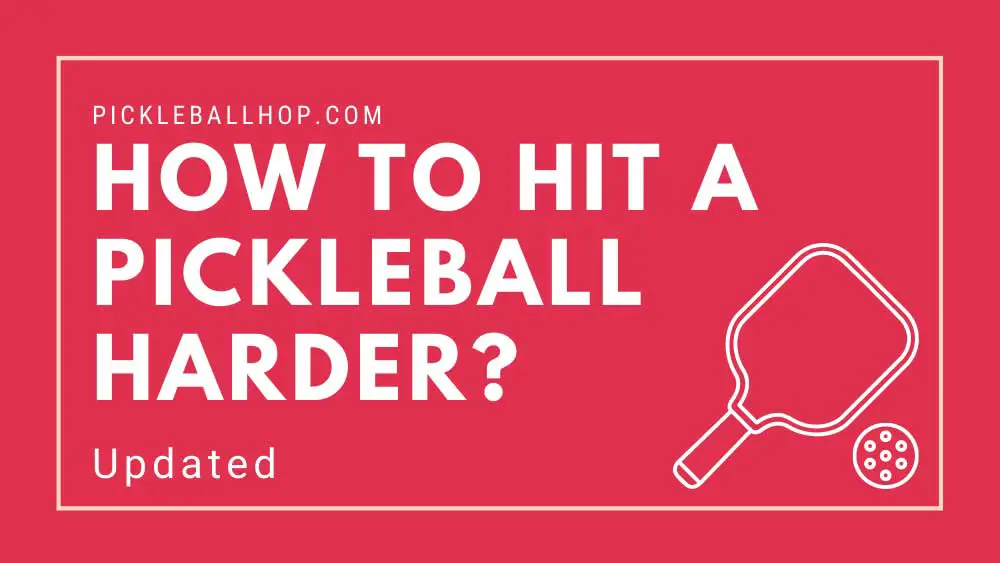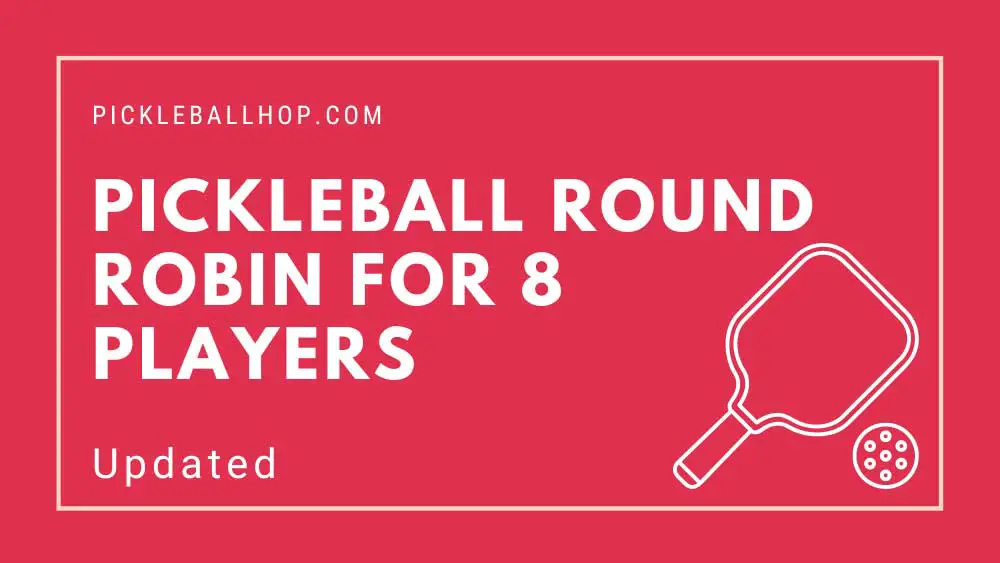How you hold your pickleball paddle – or your pickleball grip – is an important aspect of your pickleball game. Using the right pickleball grip on the pickleball court will determine how you hit the pickleball and the shots you make. Consequently, it is important to select a pickleball grip that compliments your playing style and accentuates your pickleball shots.
The following will become clearer after reading this blog:
- How to choose the right pickleball grip for your game;
- What weaknesses do your opponents’ pickleball grips have;
- How to change your pickleball grip;
- What is the proper grip pressure for pickleball;
- How to determine the perfect grip size for pickleball;
- What to look for when replacing a pickleball grip; and
- Add an overgrip to your pickleball grip.
How to Hold the Pickleball Paddle – Pickleball Paddle Grips
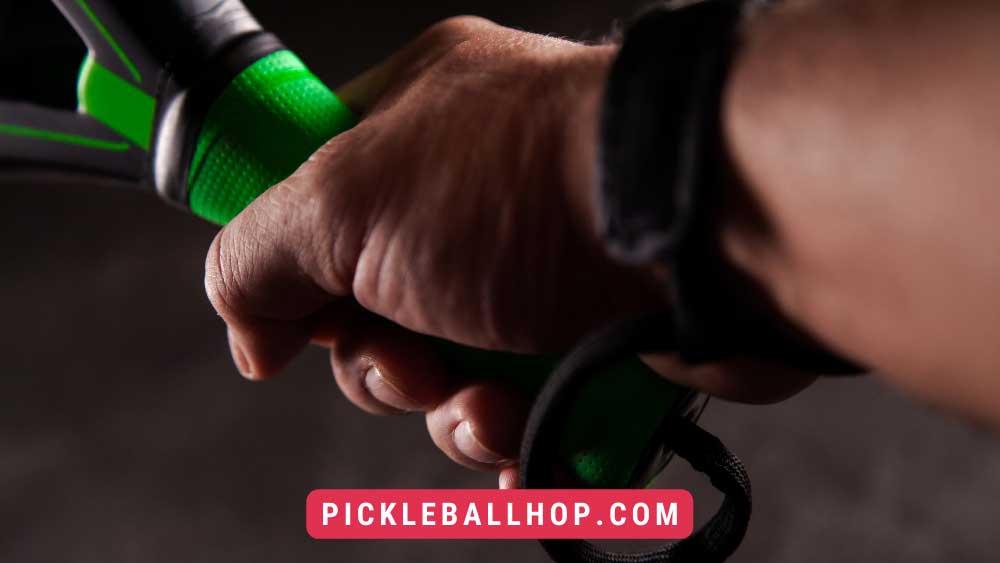 Pickleball paddle grips can be divided into three basic categories:
Pickleball paddle grips can be divided into three basic categories:
- Eastern Pickleball Grip
- Western Pickleball Grip
- Continental Pickleball Grip
The pros and cons of each of these types of pickleball grips are extremely important, as they serve as important indicators as to where the pickleball will go and how you will be able to reset for the next shot. Taking advantage of your opponents’ pickleball grip’s weaknesses can also provide you with insights into their playing style.
Eastern Pickleball Grip – Best Pickleball Paddle Grip for Beginners
Eastern pickleball grips are the most popular pickleball grips. The basic Eastern pickleball grip should be used by all beginners and intermediate players on the pickleball courts. Pickleball grips that allow for forehand and backhand shots are known as universal or neutral pickleball grips. A forehand pickleball shot and a backhand pickleball shot can both be executed with the Eastern pickleball grip.
Pickleball paddles with this grip look to the left and to the right of the body evenly when held directly out in front of you with your opposite hand. You should place the hand you are holding on the pickleball paddle’s face.
Shake hands with your pickleball paddle grip by sliding your hand down the paddle face.
You may enjoy reading our guide How to choose a pickleball padel here.
Western Pickleball Grip – Favors Forehands on the Pickleball Court
Right-handed pickle ballers should turn their wrist 90 degrees clockwise, while left-handed pickle ballers should turn their wrist 90 degrees counterclockwise. Western pickleball grips produce a lot of spins but make backhand shots on the pickleball court very difficult.
The Western pickleball grip generates powerful pickleball forehands because your palm is generally behind the pickleball paddle. On a backhand, a Western pickleball grip positions your palm in front of the pickleball paddle, taking away most of the power from your backhand shot. It is a common occurrence for Western pickleball players to hit forehand shots backward on the backhand side due to this. Therefore, if you’re facing someone with a Western pickleball grip, try to hit the backhand side. However, some players will use this grip in order to compensate for weak backhand shots by using a two-handed backhand.
Continental Pickleball Grip – Favors Backhands on the Pickleball Court
Pickleball players often call the Continental grip a hammer grip. Because you will hold the pickleball paddle like a hammer when hitting a nail in order to learn the Continental pickleball grip. If you are a right-hander, turn your wrist slightly counterclockwise, while if you are a left-hander, turn your wrist slightly clockwise so that the V formed between your thumb and your index finger points to the other side of your paddle.
Continental pickleball grips are completely different from Western pickleball grips. While the Continental pickleball grip produces great backhands and dinks, it makes it more difficult to make forehands on the pickleball court because it seems to favor backhands slightly.
Pickleball backhands requiring a Continental grip will result in powerful pickleball backhands as your palm is typically behind your pickleball paddle. A Continental pickleball grip, on the other hand, causes your palms to generally be on the side or in front of your pickleball paddle on a forehand, making it difficult to squarely hit the shot with your pickleball paddle. So, if you find yourself playing against a player with a Continental pickleball grip, take aim at the shoulder on his or her forehand side and try to give them an uncomfortable chicken wing, since he or she will find it hard to flip the pickleball paddle forehand.
You may enjoy reading Why Is It Called Pickleball?
How to Hold Your Pickleball Paddle – Which Pickleball Grip Is Best for You
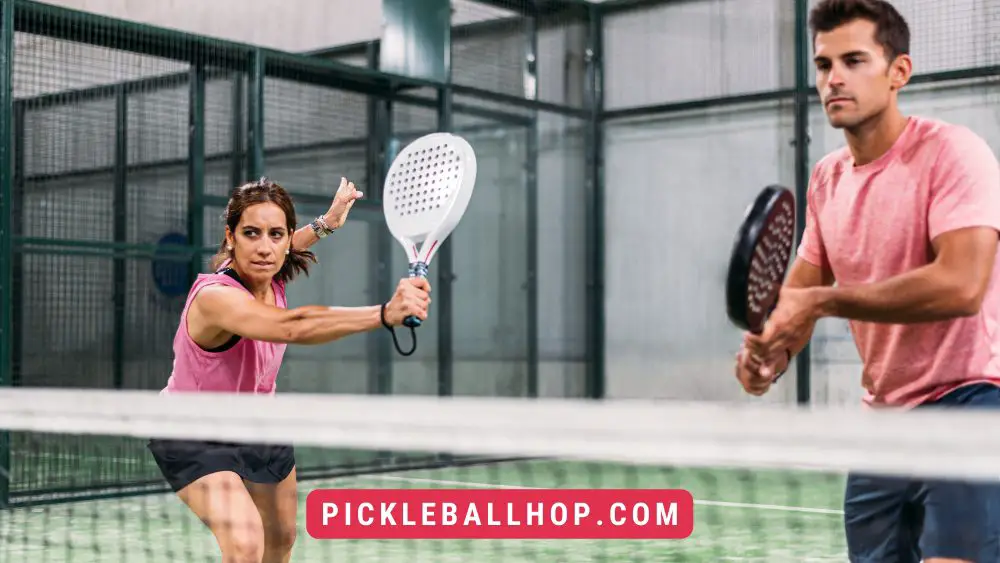 Playing pickleball requires you to get into a pickleball grip, which can be hard to change once you get used to it-and the way you hold your paddle will certainly have an effect on your pickleball game. It can be frustrating to try to change your pickleball grip later on if you have an odd grip. Choosing the right pickleball grip and developing good habits are important for beginners.
Playing pickleball requires you to get into a pickleball grip, which can be hard to change once you get used to it-and the way you hold your paddle will certainly have an effect on your pickleball game. It can be frustrating to try to change your pickleball grip later on if you have an odd grip. Choosing the right pickleball grip and developing good habits are important for beginners.
Pickleball grips should complement your pickleball style. This is something we talked about above. Pickleball grips that work for you after playing for some time should be kept. However, if your pickleball grip does not complement your play style, or if you’re just starting out, you might want to use the Eastern grip.
The Eastern pickleball grip is also universal or neutral for both backhand and forehand shots, as noted above, so most pickleball players – especially beginners – should use it. Therefore, an Eastern pickleball grip is the best compromise between an offensive and defensive pickleball shot.
Considering that so much of the game is played at the pickleball net, where most of the action consists of dinks and fast volleys, you may find it more comfortable to use the Continental pickleball grip (a slight mix of Eastern and Continental pickleball grips). In other words, continental pickleball grips are most useful for dinks and backhands in pickleball.
Pickleball Grip: Should You Put Your Finger Up?
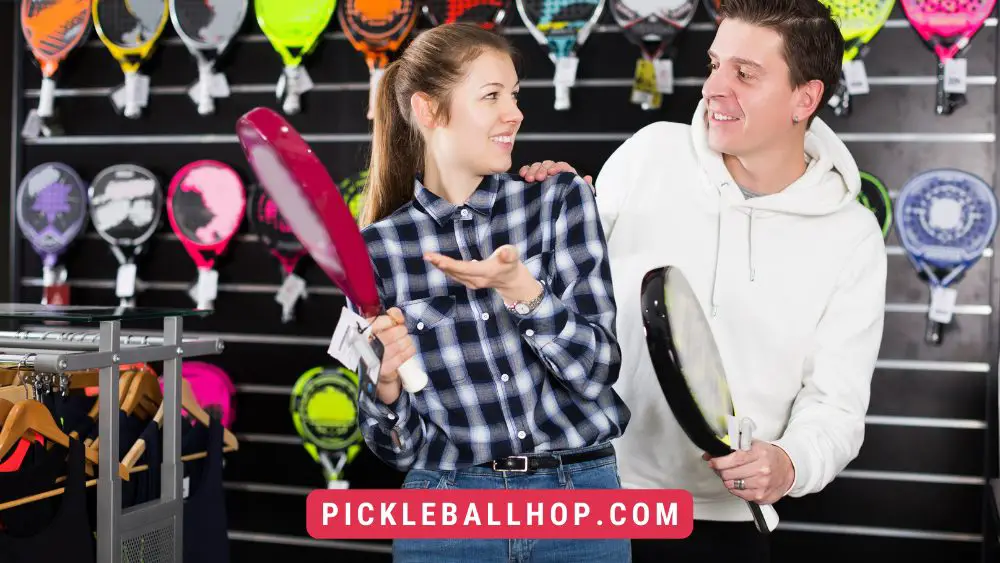 It might seem odd to some pickleball players, but some add a finger, or even a thumb, to the paddle’s face. The game of pickleball is often played by players with table tennis (also called ping pong) background. You can gain more control over a pickleball paddle by placing your fingers, fingers, or thumb on the face of the paddle.
It might seem odd to some pickleball players, but some add a finger, or even a thumb, to the paddle’s face. The game of pickleball is often played by players with table tennis (also called ping pong) background. You can gain more control over a pickleball paddle by placing your fingers, fingers, or thumb on the face of the paddle.
You may however be exposed to the pickleball if your fingers or thumb are exposed, as well as some mishits on the pickleball court.
Pickleball two-handed backhand grip
Pick your favorite grip on the pickleball court before swinging your two-handed backhand. After this, place the non-paddle hand on top of the paddle grip and behind the paddle handle when you hit the pickleball, so that the palm of the non-paddle hand is behind the paddle handle. The index finger of the hand that is not holding the pickleball paddle can be put on the back face of the paddle. In addition to giving you more control of the pickleball paddle, your index finger will also not be exposed to being hit by the pickleball, as it would be on the backside of the pickleball paddle.
You may enjoy reading our guide Why pickleball is so popular?
Pickleball Grip Changes – How and When to Change Your Grip
 In general, it doesn’t take much time for you to change your pickleball grip between shots in the sport of pickleball. In pickleball, players do not have the same amount of time to change their grip as in tennis. Since so much pickleball is played at the Non-Volley Zone (or Kitchen) line, there is little time to change your pickleball grip because so much of the game is played at the Non-Volley Zone (or Kitchen) line.
In general, it doesn’t take much time for you to change your pickleball grip between shots in the sport of pickleball. In pickleball, players do not have the same amount of time to change their grip as in tennis. Since so much pickleball is played at the Non-Volley Zone (or Kitchen) line, there is little time to change your pickleball grip because so much of the game is played at the Non-Volley Zone (or Kitchen) line.
Pickleball is more important than other sports because the time between shots is small (for instance, it is better to stick to the Eastern pickleball grip (or maybe a touch of the Continental pickleball grip). Pickleball grips may change slightly, however. As an example:
- You should use the baseline when playing pickleball (for instance, when serving, returning of serves, and when you make third shots, whether a drive or drop); or
- Pickleball players at the higher skill levels are changing their grips between shots and during points.
Pickleball grips can be adjusted by lightly touching the outside edge of your paddle with your non-paddle hand. Whenever you have time to manipulate your pickleball grip between shots, use your fingertips to torque your pickleball paddle. You will be able to manipulate the pickleball paddle easily if you keep your grip strength on your weaker side. Pickleball paddles must be held tightly so that your non-paddle hand is able to quickly torque your paddle. In picking up the pickleball, keep in mind that you will let go of the pickleball paddle with your non-paddle hand.
If you want to change the direction of the pickleball, try changing your grip. If you are playing a forehand drive from the baseline, for example, consider switching to the Western pickleball grip, or if you are playing a backhand drive from the baseline, you might switch to the Continental pickleball grip. If you get ready and prepare for the next shot, you’ll want to quickly switch back to the Eastern pickleball grip (maybe with a little bit of a Continental touch).
You may enjoy reading Pickleball vs. Paddle Tennis vs. Padel
Pickleball Grip Pressure – Loose, Relaxed Grip Pressure is Vital
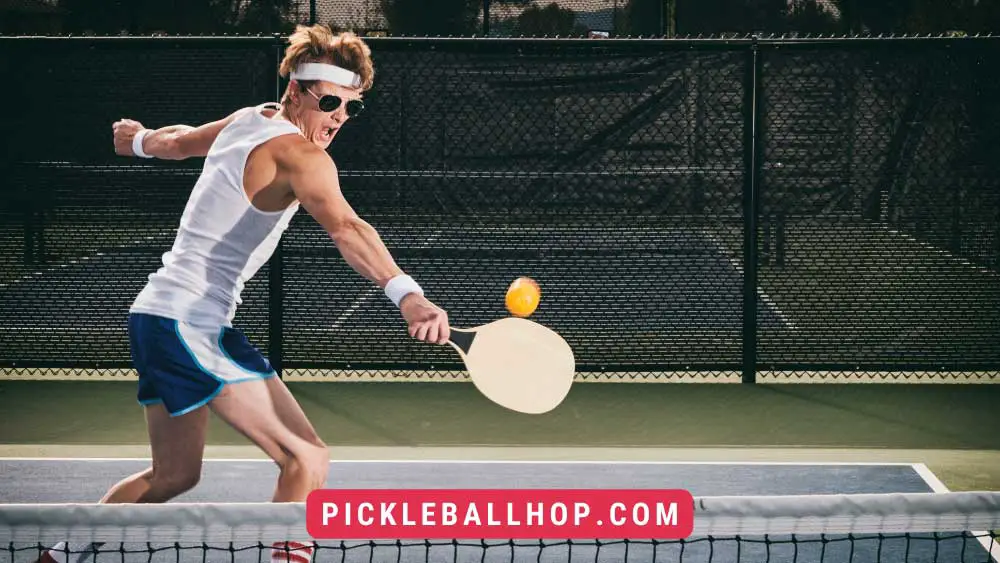 Pickleball players grip their pickleball paddles far too tightly, putting a lot of pressure on the palms of their hands – think that 10 out of 10 pickleball grip pressure, where the pickleball player is “white-knuckling” the pickleball paddle. Too much pickleball grip pressure, or too much palm on the pickleball paddle, can be a negative on the pickleball court, as this can result in loss of control and/or loss of feel off of the paddle when playing pickleball. Therefore, too much grip pressure on one’s pickleball paddle and/or too much palm on one’s pickleball paddle can cause a pickleball to ricochet and rebound too high (and, high balls generally mean easy put-away shots for the opposing player).
Pickleball players grip their pickleball paddles far too tightly, putting a lot of pressure on the palms of their hands – think that 10 out of 10 pickleball grip pressure, where the pickleball player is “white-knuckling” the pickleball paddle. Too much pickleball grip pressure, or too much palm on the pickleball paddle, can be a negative on the pickleball court, as this can result in loss of control and/or loss of feel off of the paddle when playing pickleball. Therefore, too much grip pressure on one’s pickleball paddle and/or too much palm on one’s pickleball paddle can cause a pickleball to ricochet and rebound too high (and, high balls generally mean easy put-away shots for the opposing player).
It is, therefore, vital to be relaxed and loose when playing pickleball – about a 4 out of 10 grip pressure on the pickleball court. Pickleball paddles should be held more in the fingers than the palm of the hand. You will have a softer touch with your pickleball paddle if you loosen your grip pressure and use more fingers to hold it. Your pickleball grip should be loose and relaxed so that you can reset fastballs on the pickleball court as well as maintain control over your shots (such as your drops and dinks).
You may enjoy reading Is Pickleball an Olympic Sport?
Pickleball Grip Size – Which Pickleball Grip Size Is Right for You?
A pickleball paddle’s thickness is not governed by the pickleball rules. Pickleball paddle grip sizes can also vary based on preference – one can use as thin or thick a grip as desired. As a result, most pickleball paddle grips are approximately 4 to 4.5 inches in circumference. You can choose the pickleball grip size based on your preference (such as weight, bulk, and comfort).
In case you aren’t sure what grip size is best for you, there are a few tests you can perform. It may also be helpful for you to figure out the pickleball grip size that is right for you to avoid tennis elbow pain, as the wrong pickleball grip size may cause tennis elbow pain.
Pickleball Grip Size Test by Height
Depending on your height, you may need a different pickleball grip size.
| Your Height | Suggested Pickleball Grip Size |
| Below 5’ 3” | 4” circumference |
| 5’ 3” to 5’ 8” | 4.25” circumference |
| Above 5’ 8” | 4.5” circumference |
Test of Pickleball Grip Size based on Finger Length
You can choose the pickleball grip size by bending your paddle-hand ring finger into the middle crease of your paddle-hand palm. Basically, you should measure the distance between the tip of your paddle-hand ring finger to the middle crease of your paddle-hand palm, depending on how big you really want your pickleball grip. Choosing the smaller pickleball grip size may be your best option if you are unsure about two sizes.
Index Finger Test for Pickleball Grip Size
In order to determine the correct pickleball grip size, you will need a pickleball paddle. You should hold the pickleball paddle with an Eastern grip.
Hold your pickleball paddle with your opposite hand directly out in front of you, such that the paddle face is facing evenly to your left and to your right. Placing your hand on the paddle face while holding the pickleball paddle is the proper way to do it.
Shake hands with the pickleball paddle grip while sliding your hand down the paddle face.
Insert the index finger of your free hand between the fingers of the pickleball paddle and the thumb of the hand holding it. Generally, the pickleball grip size that fits your index finger the best is the one that fits snugly in the gap. The pickleball grip size may be too small if your index finger cannot fit in it. The pickleball grip may be too big if your index finder fits inside with ample room to spare on either side.
This index finger test for grip size, however, is more commonly done in tennis since racquets tend to be larger in size when it comes to grip size. In this case, this test will not produce the most accurate results when measuring pickleball grip size. In addition to height and finger length, we suggest combining this index finger test with a pickleball grip measurement.
You may enjoy reading How Many Calories Do You Burn Playing Pickleball?
Doubtful about Pickleball Grip Size?
In general, when in doubt about which pickleball grip size will work best for you, it is better to opt for a smaller size. Pickleball grips of a small size will allow you to deliver a stronger shot, as well as have more control and spin of your shots because of the wrist action. In addition, a pickleball paddle that has a too-large grip size may slip from your grip.
You may enjoy reading our guide Pickleball Kitchen Rules
In summary, if you decide that the pickleball grip size is not for you, you can always change it. In order to achieve this, you can re-grip your pickleball paddle or add extra pickleball grips or overgrips. Find out more below!
Pickleball Grips and Pickleball Overgrips
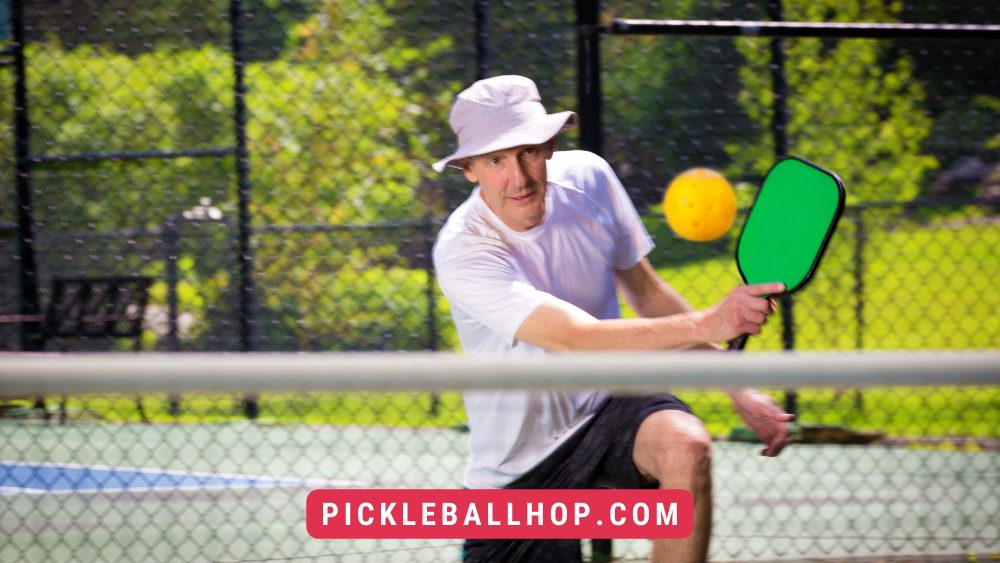 There is a leather-like wrap around the handle of the pickleball paddle known as the pickleball grip. As part of the pickleball handle, you will find a sticky-backed grip with a lot of cushioning covering the wood or composite material. This makes it more comfortable to hold.
There is a leather-like wrap around the handle of the pickleball paddle known as the pickleball grip. As part of the pickleball handle, you will find a sticky-backed grip with a lot of cushioning covering the wood or composite material. This makes it more comfortable to hold.
Pickleball overgrips are thin, spongey wraps that cover the whole pickleball grip. The pickleball overgrip serves to make the paddle easier to grip, as well as more sweat-absorbent and more comfortable.
Over time, pickleball grips and overgrips can wear out. If you play pickleball frequently, you may need to replace both. Note that pickleball overgrips tend to be cheaper than pickleball grips. So, pickleball players often use an overgrip to reduce the amount of time they need to spend replacing their pickleball grips.
How to Replace a Pickleball Grip
Pickleball grips can be replaced as follows:
- Remove your old pickleball grip by pulling back the tape on your pickleball handle and unwrapping it until it comes completely apart from your pickleball paddle.
- It is best for you to align the angled side of the new pickleball grip near the buttcap of your pickleball paddle with the bottom of your pickleball paddle. As you move up the paddle handle, the pickleball grip should become wider before it is even with the bottom of your paddle handle.
- Around the paddle handle, wrap the new pickleball grip. Make sure to pull the pickleball grip taut as you wrap it around the paddle handle so that there are no wrinkles. If you replace your pickleball grip, consider adjusting the grip size. Wrap your pickleball grip more loosely to make it smaller. You can increase the size of your pickleball grip by wrapping it more tightly around the paddle handle, so that it overlaps with each turn.
- As you reach the top of the paddle handle, ensure that there is an angle in the new pickleball grip. It might be necessary to cut the new pickleball grip so that it has an angle at the top (similar to the angle at the beginning of the new pickleball grip), if it does not have an angle at the top. As you move down the paddle handle, the pickleball grip should taper and be even with the top of the handle.
- The top of the paddle handle should be covered with a thin piece of finishing tape (such as electrical tape). Seal the pickleball grip in place by wrapping the finishing tape over itself.
How to Add Overgrip to Pickleball Paddle
Overgrips for pickleball can be added as follows:
- Overgrip the pickleball paddle and align the bottom of the pickleball paddle with the butt cap at the top. Overgrips on pickleball paddles should be even with the bottom of the handle.
- Pickleball paddle handles should be wrapped with the new overgrip. Make sure that the pickleball overgrip is taut as you wrap it around the paddle handle in order to avoid wrinkles in the material. While you’re replacing your pickleball overgrip, you might want to adjust the size of your pickleball grip. Wrap your pickleball overgrip more loosely to make your grip size smaller. Wrap your new pickleball overgrip around the paddle handle more tightly to increase the size of the grip. This will ensure that the overgrip overlaps as it goes around the paddle handle.
- Once you reach the top of the paddle handle, angle the new pickleball overgrip. Pickleball overgrips should start to taper wider as you move down the paddle handle, and they should be aligned with the top of the paddle handle.
- The handle of the pickleball paddle should be covered with a thin piece of finishing tape (for example electrical tape). Seal the pickleball overgrip in place by wrapping the finishing tape over itself.

